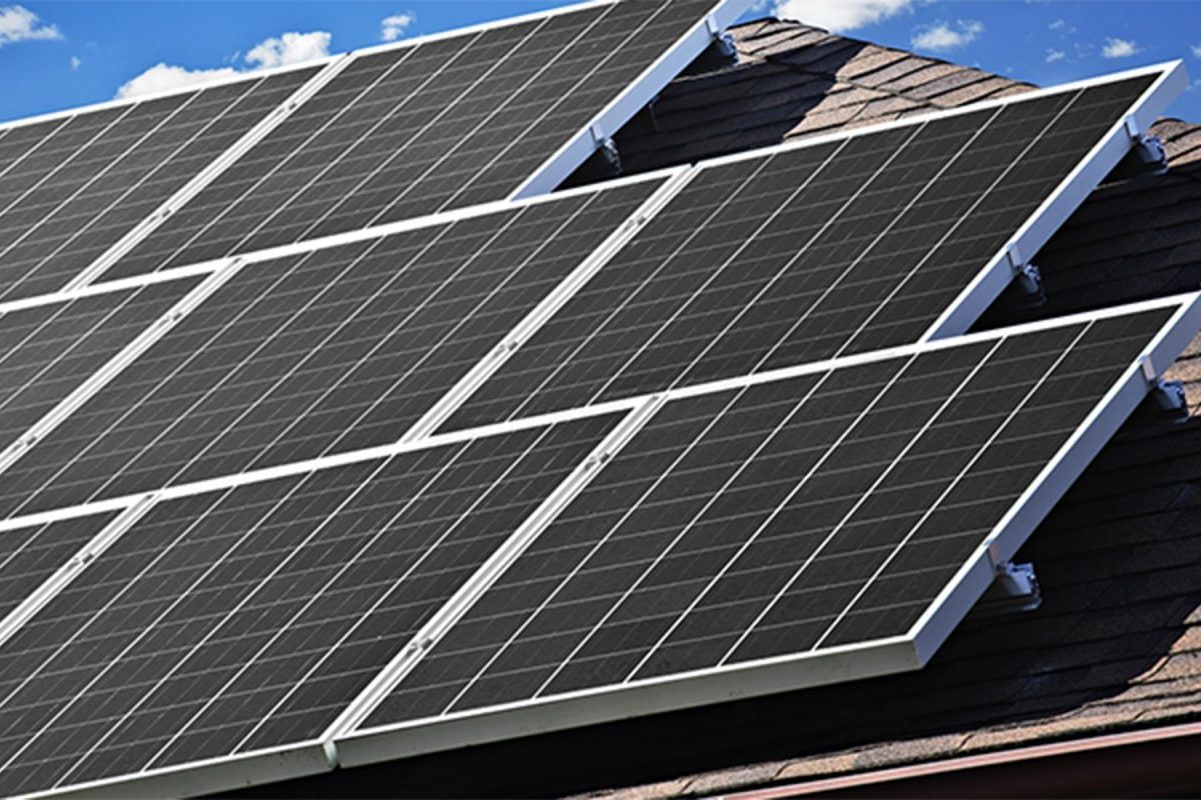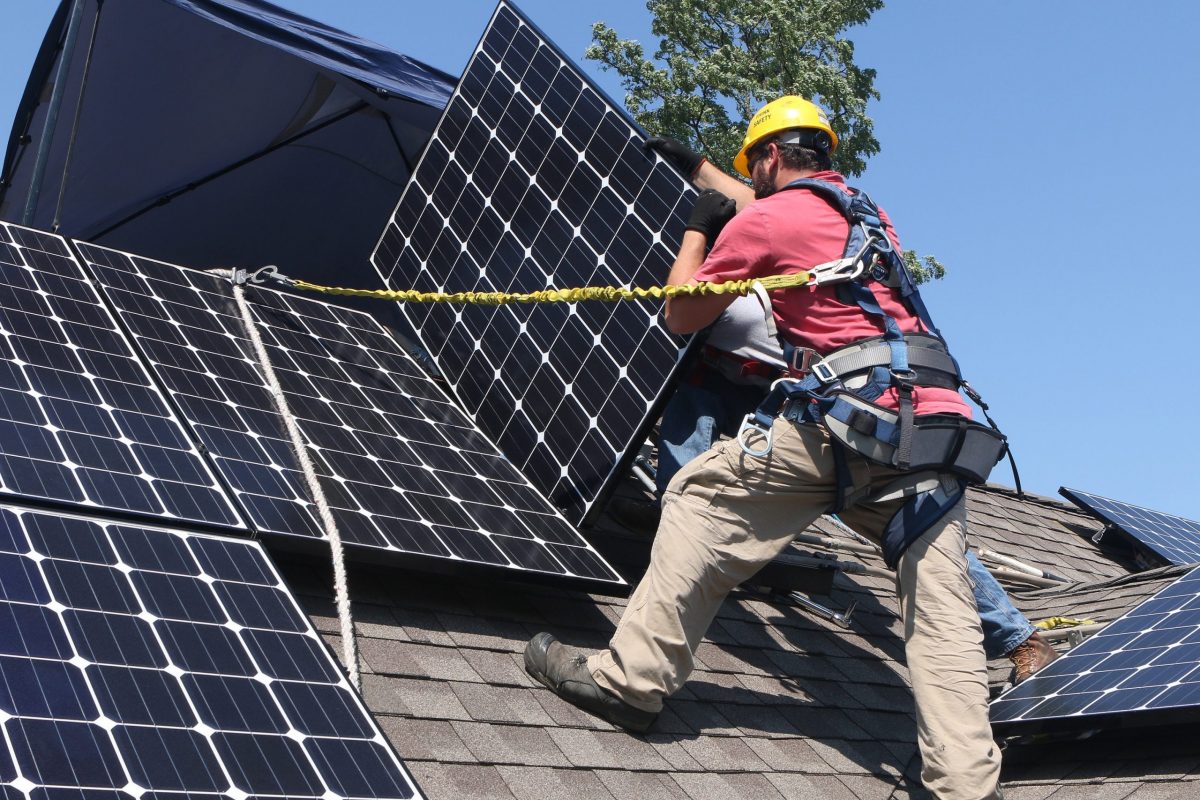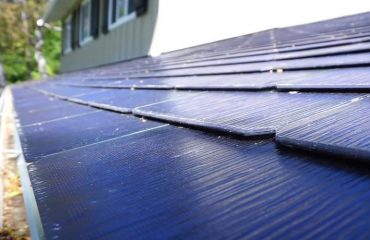Transform your home’s energy efficiency with Z-Wave smart thermostats – the intelligent bridge between your solar panel system and climate control. Through advanced smart thermostat integration, these devices automatically adjust your home’s temperature based on real-time solar production, weather forecasts, and your daily routines. By precisely matching your HVAC usage with peak solar generation periods, Z-Wave thermostats can reduce energy waste by up to 23% while maximizing your solar investment. Unlike traditional programmable thermostats, Z-Wave devices offer seamless connectivity with other smart home components, creating a comprehensive energy management ecosystem that puts you in control of your home’s comfort and efficiency. Whether you’re optimizing for maximum solar utilization or seeking to reduce your carbon footprint, Z-Wave smart thermostats represent the next evolution in sustainable home automation.
Understanding Z-Wave Smart Thermostats
Key Features of Z-Wave Thermostats
Z-Wave thermostats stand out in the smart home market thanks to their robust mesh networking capabilities. Unlike traditional Wi-Fi devices, Z-Wave thermostats create a network where each device acts as a signal repeater, strengthening the connection throughout your home. This means more reliable performance and better coverage, even in larger homes or buildings with thick walls.
One of the most appealing features of Z-Wave thermostats is their exceptional compatibility with other smart home devices. These thermostats can seamlessly integrate with hundreds of products from different manufacturers, giving you the flexibility to expand your smart home system over time without worrying about compatibility issues.
The technology also offers impressive energy management capabilities through detailed scheduling, remote monitoring, and automated temperature adjustments. Many Z-Wave thermostats include advanced features like occupancy sensing, weather monitoring, and learning algorithms that adapt to your lifestyle while optimizing energy usage.
Security is another key advantage, as Z-Wave uses AES-128 encryption to protect your data and device communications. This ensures your heating and cooling system remains secure from potential cyber threats while maintaining reliable performance.
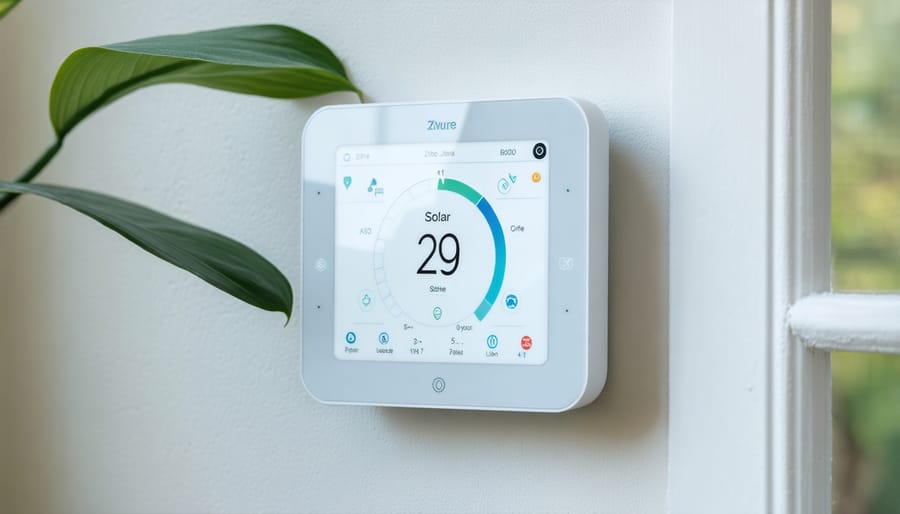
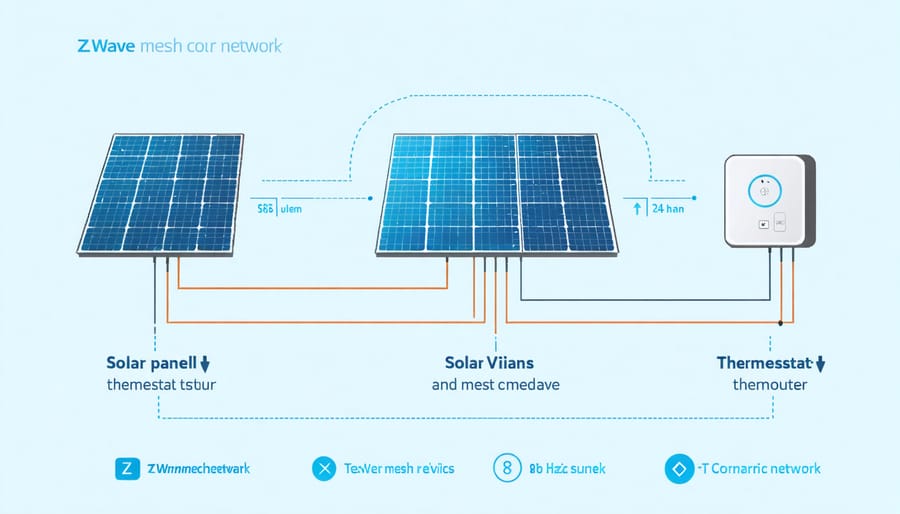
Perfect Partners: Z-Wave Thermostats and Solar Panels
Real-Time Energy Management
Z-Wave smart thermostats excel at real-time energy management by seamlessly integrating with your home’s solar power system. These devices work in harmony with solar energy management systems to optimize your home’s temperature based on current solar production levels.
When your solar panels are generating peak power during sunny days, your Z-Wave thermostat automatically adjusts to take advantage of this abundant clean energy. It might pre-cool your home during high solar production periods, reducing the need for grid power later in the day when solar output decreases.
The thermostat can also respond to weather forecasts, adjusting heating and cooling schedules to maximize solar power usage. For example, if tomorrow is predicted to be cloudy, the system might store more thermal energy today while solar production is high.
This intelligent coordination between your solar panels and thermostat ensures you’re using clean energy when it’s most abundant and cost-effective. Many homeowners report significant reductions in their utility bills thanks to this smart integration, making it a valuable addition to any solar-powered home.
Peak Usage Optimization
A Z-Wave smart thermostat can be programmed to automatically adjust your home’s temperature settings to maximize solar energy consumption during peak production hours. By syncing your thermostat with your solar system’s output, you can ensure your home uses the most energy when your panels are generating the most power – typically between 10 AM and 4 PM.
During these peak hours, you can pre-cool your home, taking advantage of the abundant solar energy. This strategy allows you to rely less on grid power during evening hours when solar production decreases. For example, setting your thermostat to cool your home to 72°F during peak solar hours means you can comfortably let the temperature rise to 75°F later when you’re using grid power.
Many Z-Wave thermostats offer scheduling features that learn your household’s patterns and automatically adjust to optimize solar usage. Some models even integrate with weather forecasting services to predict solar production and adjust temperature settings accordingly. This smart optimization can lead to significant energy savings while maintaining comfort throughout your home.
Financial Benefits of Integration
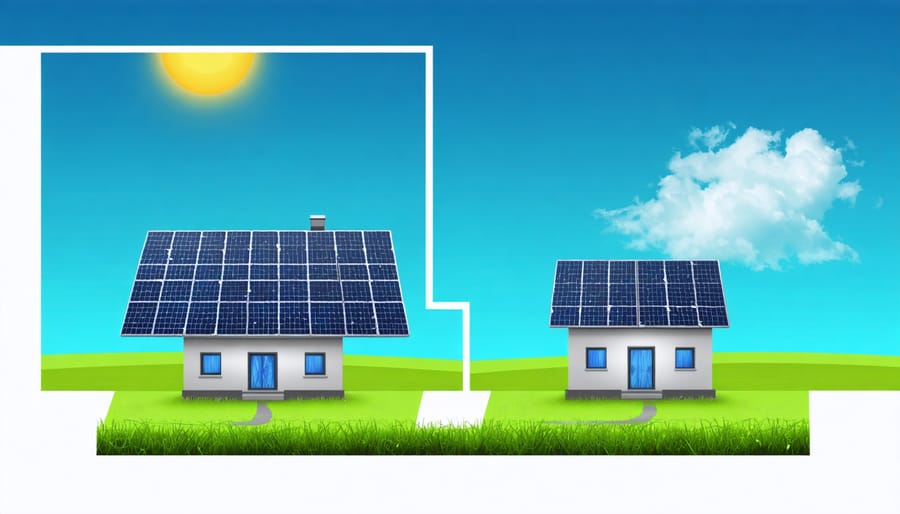
Energy Bill Reduction
A Z-Wave smart thermostat can significantly reduce your energy bills through intelligent energy management and strategic scheduling. Users typically report 15-23% savings on heating and cooling costs after implementation. For example, programming your thermostat to adjust temperatures during work hours (8 AM to 5 PM) can save approximately $180 annually. Setting night-time temperature shifts from 10 PM to 6 AM adds another $120 in yearly savings. Weekend scheduling, which maintains comfort during active hours while reducing energy use during outings, contributes an additional $100 in savings. The system’s ability to learn your preferences and automatically adjust to occupancy patterns further optimizes these savings without sacrificing comfort.
Simple Setup and Operation
Installing a Z-Wave smart thermostat is surprisingly straightforward and can typically be completed in under an hour. Start by turning off power to your HVAC system at the circuit breaker for safety. Remove your old thermostat’s faceplate and take a photo of the existing wire connections for reference. Label each wire using the included stickers that come with your new smart thermostat.
Mount the new thermostat’s base plate to the wall and connect the labeled wires to their corresponding terminals. Most Z-Wave thermostats include clear wiring diagrams and color-coded terminals to make this process foolproof. Once wired, attach the display unit and restore power to your HVAC system.
Adding your thermostat to your Z-Wave network is as simple as putting your hub in pairing mode and pressing the designated button on your thermostat. The device will automatically connect to your network, allowing you to control it through your smart home app.
Daily operation is intuitive – adjust temperature directly on the thermostat’s touchscreen or using your smartphone. Set schedules, create automation rules, and monitor your energy usage through the app for optimal comfort and efficiency.
A Z-Wave smart thermostat represents a smart investment in both comfort and energy efficiency for your home. By automatically adjusting temperatures, learning your preferences, and integrating seamlessly with other smart home devices, these thermostats help reduce energy consumption while maintaining optimal comfort. The potential for significant energy savings, combined with remote control capabilities and detailed usage insights, makes this technology an essential upgrade for any modern home. Take the first step toward a more efficient and comfortable living space by upgrading to a Z-Wave smart thermostat today.







